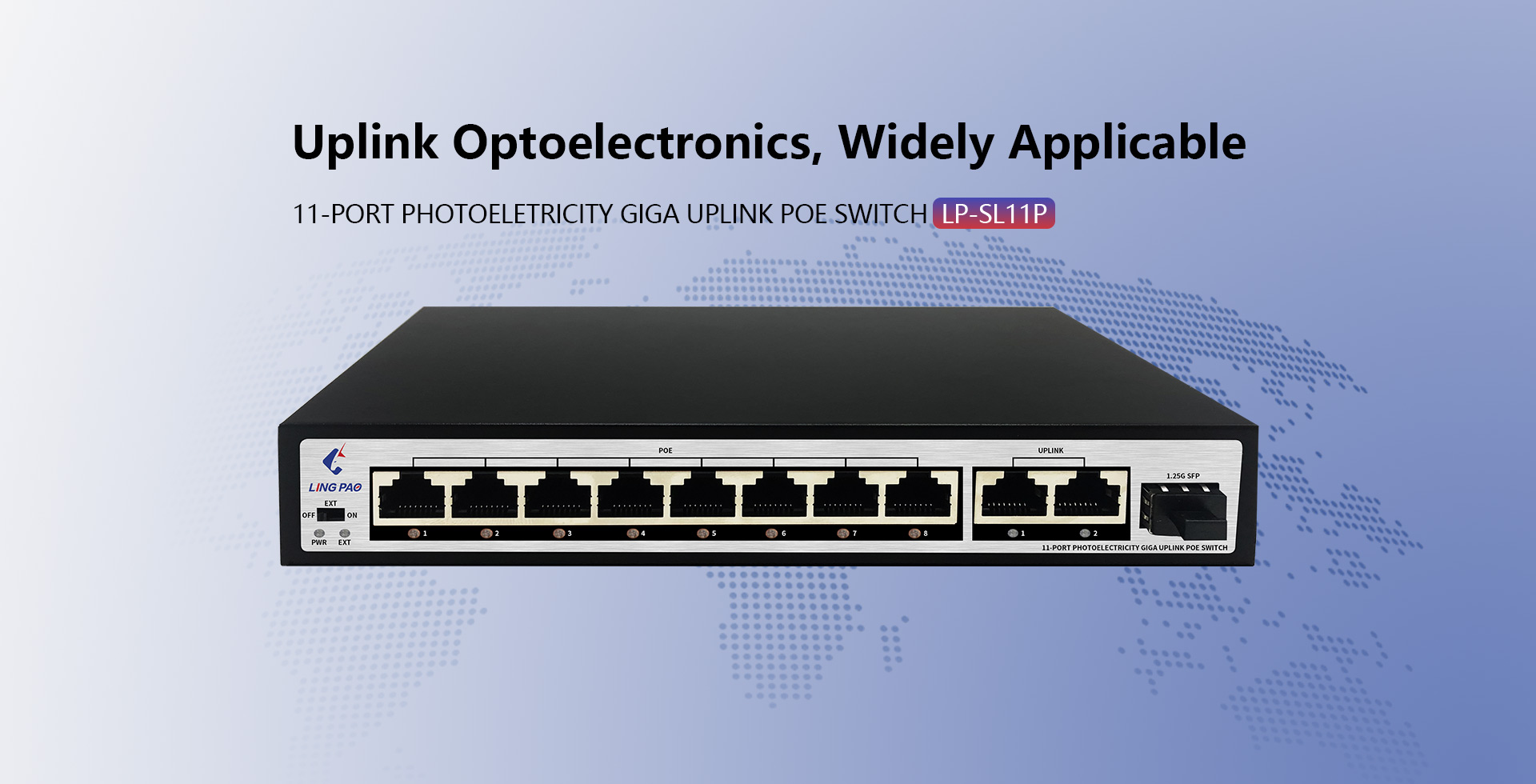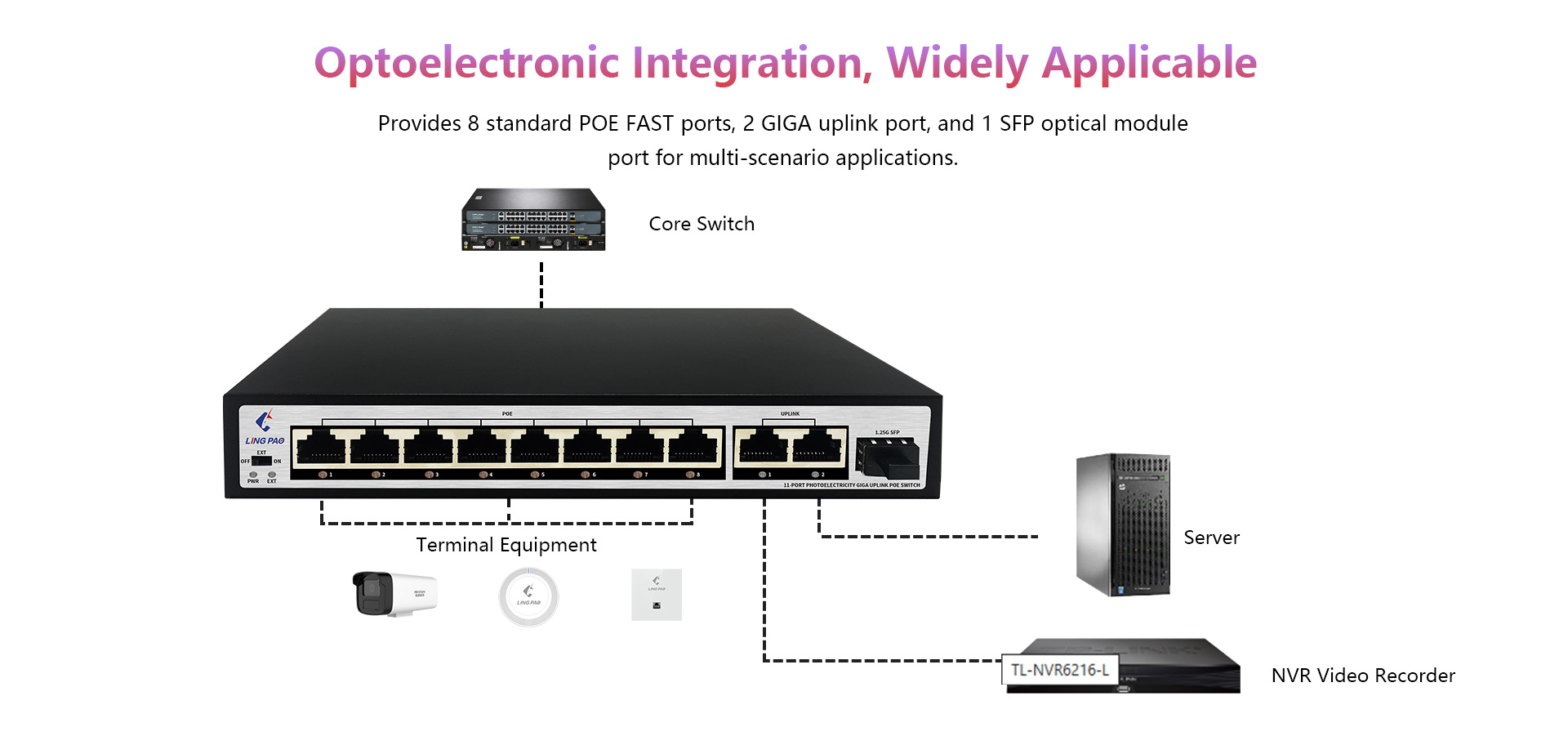As a leading PoE switch manufacturer, ORYXRUN understands the critical role that power over Ethernet (PoE) technology plays in modern networking. PoE and PoE+ switches are essential for powering devices such as IP cameras, wireless access points, and VoIP phones through a single Ethernet cable. This article compares PoE and PoE+ switches, focusing on their power capabilities, applications, and benefits, to help you choose the right solution for your networking needs.
Understanding PoE and PoE+ Technology
PoE (Power over Ethernet):
- PoE technology allows Ethernet cables to carry electrical power, eliminating the need for separate power supplies for connected devices. Standard PoE, defined by the IEEE 802.3af standard, delivers up to 15.4 watts of power per port.
PoE+ (Power over Ethernet Plus):
- PoE+ is an enhanced version of PoE, defined by the IEEE 802.3at standard. PoE+ increases the maximum power delivery to 30 watts per port, providing more power to connected devices.

Key Differences in Power Capabilities
- Power Output
- PoE Switch: Delivers up to 15.4 watts per port, with 12.95 watts available to the device after accounting for power loss over the cable.
- PoE+ Switch: Delivers up to 30 watts per port, with 25.5 watts available to the device, accommodating more power-hungry devices.
- Supported Devices
- PoE Switch: Suitable for devices with lower power requirements, such as IP phones, wireless access points, and simple IP cameras.
- PoE+ Switch: Ideal for devices with higher power demands, including PTZ (pan-tilt-zoom) cameras, video conferencing systems, and more advanced wireless access points.
- Cable Specifications
- PoE Switch: Typically uses Cat5e or higher cables for optimal performance.
- PoE+ Switch: Requires Cat5e or higher cables, with Cat6 recommended for longer cable runs to minimize power loss and ensure maximum power delivery.
Benefits of Using PoE and PoE+ Switches
- Simplified Installation
- Single Cable Solution: Both PoE and PoE+ switches provide power and data over a single Ethernet cable, simplifying installation and reducing the need for additional electrical wiring. This is particularly beneficial in locations where power outlets are scarce or difficult to install.
- Cost Savings
- Reduced Infrastructure Costs: By eliminating the need for separate power supplies and electrical wiring, PoE and PoE+ switches reduce overall infrastructure costs. This makes them a cost-effective solution for expanding or upgrading networks.
- Flexibility and Scalability
- Easy Deployment: PoE and PoE+ switches allow for easy deployment and reconfiguration of network devices. This flexibility is essential for growing businesses and dynamic environments where devices may need to be moved or added frequently.
- Enhanced Safety
- Low Voltage Power: Both PoE and PoE+ switches deliver low voltage power, which is safer to install and operate compared to traditional electrical wiring. This reduces the risk of electrical hazards and simplifies compliance with safety regulations.

Applications of PoE and PoE+ Switches
- IP Surveillance
- PoE Switch: Suitable for powering basic IP cameras in surveillance systems, providing reliable connectivity and power without the need for additional cabling.
- PoE+ Switch: Ideal for advanced surveillance systems that require PTZ cameras with higher power demands, ensuring smooth operation and advanced functionality.
- Wireless Networks
- PoE Switch: Powers standard wireless access points, supporting reliable Wi-Fi connectivity in small to medium-sized environments.
- PoE+ Switch: Supports high-performance wireless access points with greater power needs, enabling enhanced Wi-Fi coverage and performance in larger or more demanding environments.
- VoIP Telephony
- PoE Switch: Powers IP phones, providing both voice and data connectivity through a single cable. This simplifies deployment and reduces clutter on desks and workspaces.
- PoE+ Switch: Suitable for video conferencing systems and advanced IP phones that require more power, ensuring high-quality audio and video communication.
- Building Automation
- PoE Switch: Powers sensors, controllers, and other low-power devices in building automation systems, enabling efficient and centralized control.
- PoE+ Switch: Supports more power-intensive devices such as smart lighting systems and environmental control units, enhancing the functionality of smart buildings.
Choosing the Right Switch for Your Needs
- Assess Power Requirements
- Evaluate the power requirements of your connected devices to determine whether a PoE or PoE+ switch is needed. Devices with higher power demands, such as PTZ cameras and advanced access points, will require PoE+ switches.
- Consider Future Expansion
- When planning your network, consider potential future expansion and the power needs of additional devices. Investing in PoE+ switches can provide greater flexibility and scalability for future growth.
- Evaluate Budget and Infrastructure
- Consider your budget and existing infrastructure when choosing between PoE and PoE+ switches. While PoE+ switches offer higher power capabilities, they may come at a higher cost. Balancing performance needs with budget constraints is key.
ORYXRUN’s PoE and PoE+ Solutions
At ORYXRUN, we offer a comprehensive range of PoE and PoE+ switches designed to meet the diverse needs of modern networks. Our switches are engineered for reliability, performance, and ease of use, ensuring seamless integration and optimal network performance.
- High-Performance PoE Switches
- Our PoE switches deliver up to 15.4 watts per port, making them ideal for powering standard IP devices. They are designed for efficient power management and reliable connectivity.
- Advanced PoE+ Switches
- Our PoE+ switches provide up to 30 watts per port, supporting high-power devices and demanding applications. They offer enhanced power capabilities and advanced features for optimal network performance.
- User-Friendly Management
- Both our PoE and PoE+ switches feature intuitive management interfaces, allowing for easy configuration, monitoring, and troubleshooting. This ensures that you can maintain optimal network performance with minimal effort.
Conclusion
Choosing between PoE and PoE+ switches depends on the power requirements of your devices and the specific needs of your network. PoE switches are suitable for standard devices with lower power demands, while PoE+ switches provide the additional power needed for more advanced devices.
ORYXRUN’s range of PoE and PoE+ switches offers reliable, high-performance solutions for various applications, from IP surveillance and wireless networks to VoIP telephony and building automation. By understanding the differences and benefits of each type of switch, you can make an informed decision that ensures your network operates efficiently and effectively.
For more information about our PoE and PoE+ switches and to explore our full range of networking products, visit our website or contact our expert support team. ORYXRUN – Powering Your Network with Excellence and Innovation.
